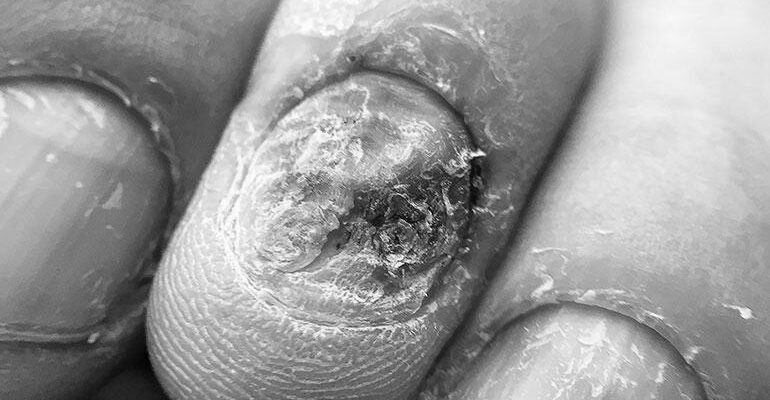- Effects of Manicures on Your Fingernail
- Inflammation of the nail bed
- Infections under the nail bed
- Treatments for nail fold inflammation
- Symptoms of a bacterial infection under the nail
- Healthy Tips For Healthy Nails
- Natural hand cream
- Avoiding harsh chemicals
- Avoiding harsh polishes
- Avoiding acetone
- Avoiding dehydrating base coats
- Avoiding harsh topcoats
Effects of Manicures on Your Fingernail
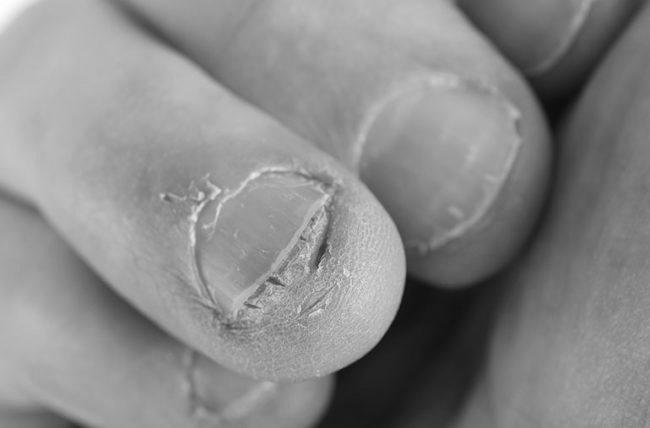
Performing a manicure on your fingernail may have various effects, including bacterial infections, nail fold inflammation, and inflamed nail folds. These changes may be perfectly normal, but they could also indicate an underlying health condition. To learn more about the effects of manicures, read on. Here are some of the symptoms and treatments for inflamed nail folds.
Inflammation of the nail bed
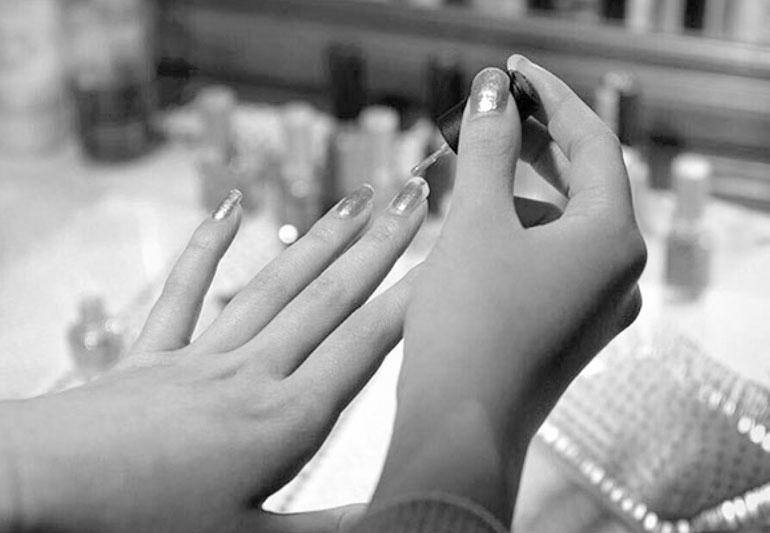
Inflammation of the nail bed after completing a manicure can occur for several reasons. Some people experience acute paronychia, which develops quickly and lasts only a few days. Acute paronychia can be caused by a bacterial infection or by over-aggressive manicuring. The nail bed may become infected by tearing the cuticle or picking at the skin near the nail. In other cases, people may experience chronic paronychia and have it for up to six weeks.
The most common reason for inflammation of the nail bed after a manicure is a chemical peel. These chemicals are incredibly harsh on the nails and can cause them to become peeling and crumbly. Moreover, they can lead to infection and deformity of the nails. Chronic picking and rubbing can also cause nail deformity. Also, nail polish or fungus can cause the nails to peel.
After ages, inflammation of the nail bed can cause severe problems for your nails. For example, if you have nails that have been infected with fungus, you should immediately get them treated. The more powerful the infection, the more serious it is. The condition can even lead to permanent nail deformity in some extreme cases. If left untreated, it may spread to other body parts, such as your fingers and toes.
The treatment of inflammation of the nail bed after a manicure depends on the severity of the problem. Infections can be bacterial or fungal. The condition of the nail bed can be treated with antibiotics. However, it may take more time to clear up than an infected nail. You should see a doctor after 24 hours of the infection if it’s serious. Antibiotics are the primary treatment for the disease. You might require minor surgical intervention to remove the infected nail bed in some severe cases.
The infection of the folds around the nail called paronychia is caused by a combination of bacteria and yeast. Condition of the nail fold can occur on one side of the nail or on both sides. People who bite their nails are at high risk for this infection.
Infections under the nail bed
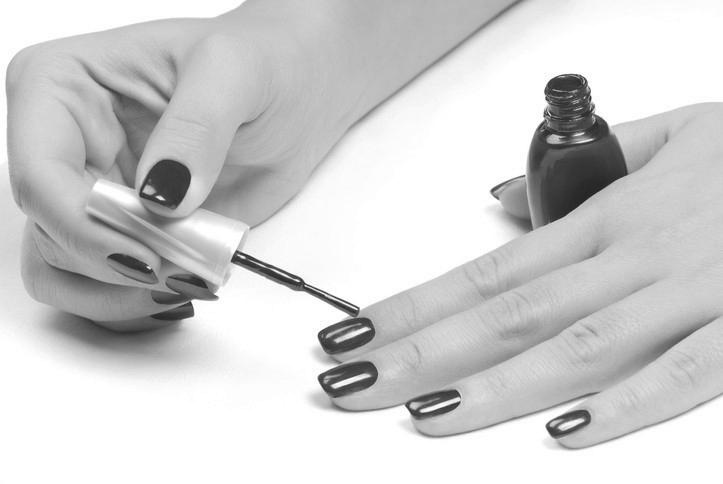
Different infections under the nail bed, such as chronic paronychia and acute paronychia. Infections caused by manicures are typically bacterial, but sometimes they can also be fungal due to occupational exposure. In the latter case, it is best to consult a doctor. The treatment for acute paronychia will depend on the severity of the infection. If the disease is acute, warm soaks or a topical antibiotic will be used. However, if the condition is chronic or has spread to other parts of the body, antibiotics may be needed.
Acute paronychia is usually accompanied by swelling and pain. It can develop into an abscess, which requires drainage by a doctor. In more severe cases, a dermatologist may recommend removing the fingernail altogether. However, if the infection is severe, it may require complex treatment, including amputation. Infections can also spread to other nails in the area.
If you notice a new brown or black stripe under your nail, you may have a melanoma. Unlike skin cancer, melanomas are caused by random mutations in the body and do not arise from exposure to sunlight. A new stripe under the nail may be a sign of an underlying condition, such as lupus erythematosus or psoriasis.
If you are unsure about the cause of your infection, visit your physician or dermatologist. Home remedies and natural treatments can help clear up most cases. If you have an immune system condition, it is also recommended that you avoid having artificial nails on your hands. This is because these may create an environment for fungi to grow. When you have a fungal infection, you should take antifungal medication to treat it.
Fungal infections in nails are also known as onychomycosis. This fungal infection affects fingernails and toenails. Once the infection has developed, the nail may grow thick and become flaky. Eventually, the infection may spread to the root of the nail. If left untreated, the infection may lead to a weakened pin or even a weakened one.
Treatments for nail fold inflammation
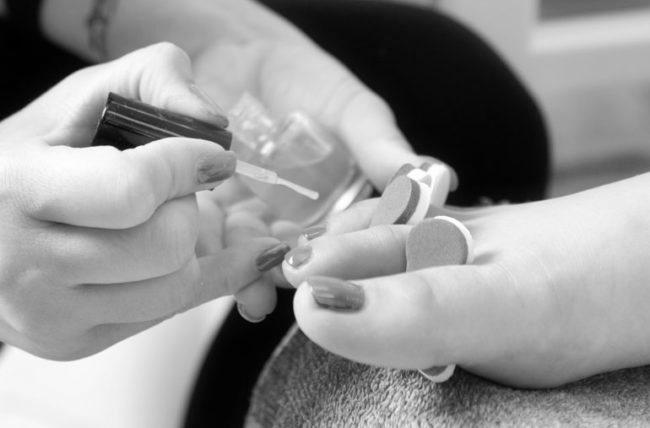
Symptoms and treatments for nail fold inflammation vary. Antifungal tablets and antibacterial creams are most common, but surgical solutions are also available. Prevention is key. Keep your hands dry and wear comfortable shoes. Antifungal pills and creams can help prevent infection and make your skin soft and smooth. If you notice swelling or pus on your nails, your doctor may recommend an antifungal solution. If you have a yeast infection, antibiotics may also help reduce the symptoms of yeast infections.
Inflammation of the nail fold can be acute or chronic. Acute paronychia occurs when bacteria invade the soft tissue fold around a fingernail, usually due to a hangnail. It is characterized by redness and swelling. Sometimes pus forms around the nail fold. In chronic paronychia, the causative organisms are mixed with anaerobic and aerobic bacteria. People with a weak immune system and chronic paronychia are more susceptible.
The mainstay of therapy for chronic paronychia is antifungal therapy. In recalcitrant cases, marsupialization or en bloc excision of the proximal nail fold is used. Despite these limited results, antifungal medications do not permanently cure chronic paronychia. Treatment options are based on a patient’s condition and preventive measures.
Surgical procedures may be necessary for acute paronychia. However, the infection can also occur in chronic paronychia. Surgical incision and drainage are available in extreme cases. Acute paronychia can lead to an abscess if untreated. To prevent it from recurring, treatment should focus on the underlying cause. There are various methods for treating the disease, including topical steroid creams and antibacterial medications.
The Swiss roll technique is one of the most common treatment options for paronychia. The surgeon elevates the nail fold with a blade of no. 15 scalpel, pointing its tip away from the nail bed. Then, the elevated nail fold is reflected over a non-adherent dressing. This dressing is secured to the skin using 2 anchoring non-absorbable sutures. The exposed nail bed allows the drainage of the infection. Simple finger dressing is then applied over the wound.
Symptoms of a bacterial infection under the nail
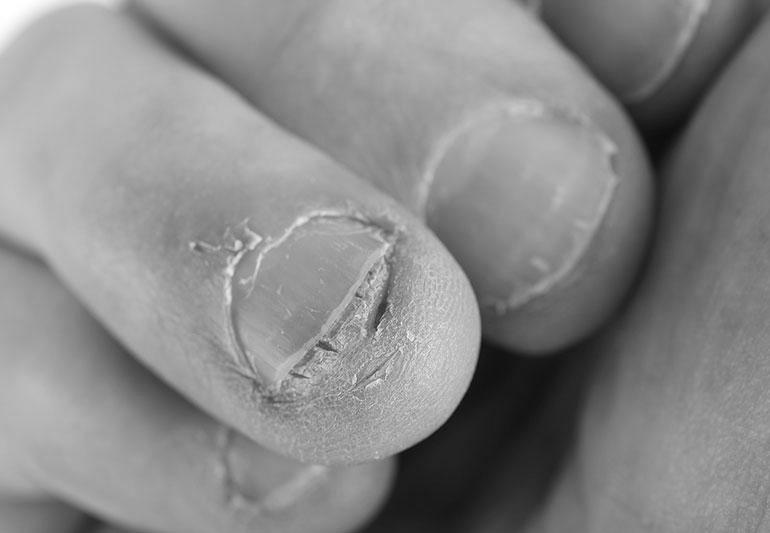
If you are having problems with your nails, it might be because you have a bacterial infection under the nail. Bacterial infections are caused by microorganisms called staphylococci, which commonly affect the proximal fold of the fingernails. The pin also protects the tip of your finger from accidental trauma.
Antibiotics are typically prescribed to treat a bacterial infection under the nail, and they kill the bacteria that cause it. The condition will usually clear up with time, but your doctor may recommend surgery to drain the infection if it doesn’t. In some cases, an infection can be treated by elevating the hardened skin around the nail. Then, a physician can make a small cut in the skin to drain the pus. A doctor can also perform an abscess-like procedure to drain the infection.
Treatment for the infection may include incisions under the fingernail or removal of the nail. Some of these abscesses are small enough to be treated with a mild antibiotic ointment at home. The cream will kill the germs causing the infection and reduce the redness and pain. If the condition is deep under the nail, your doctor may suggest that you take ibuprofen or acetaminophen to ease the pain. Typically, antibiotics are not necessary for an abscess, but he will order a drainage culture from the drainage.
Acute paronychia is a short-term infection of the skin and nails. Staph. Aureus and other bacteria can cause paronychia. This infection typically presents with red, hot, and tender nail folds. In severe cases, an abscess will form and require draining. Treatment for bacterial and fungal paronychia depends on the cause of infection.
Healthy Tips For Healthy Nails
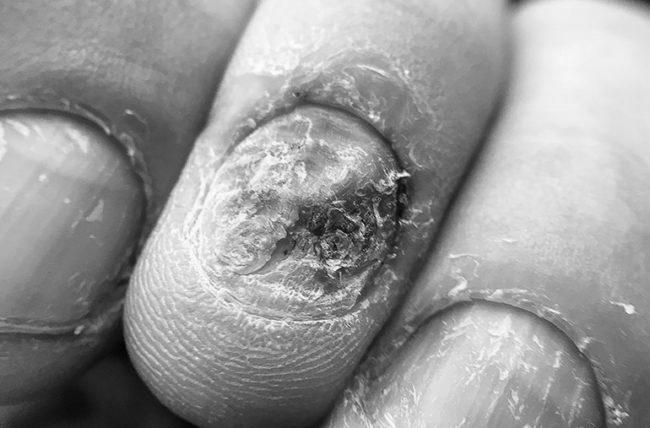
We all know that hydration is critical, so what better way to keep your nails and cuticles moisturized than by adding a touch of moisture to your cuticles? A great product to use for this purpose is Aquaphor or Vaniply. Nails and cuticles are more prone to cracking and breaking if they are too dry, so moisturizing are a must for nail strength. Another excellent tip for nail health is to wear gloves whenever possible to prevent any trauma to your hands.
Natural hand cream
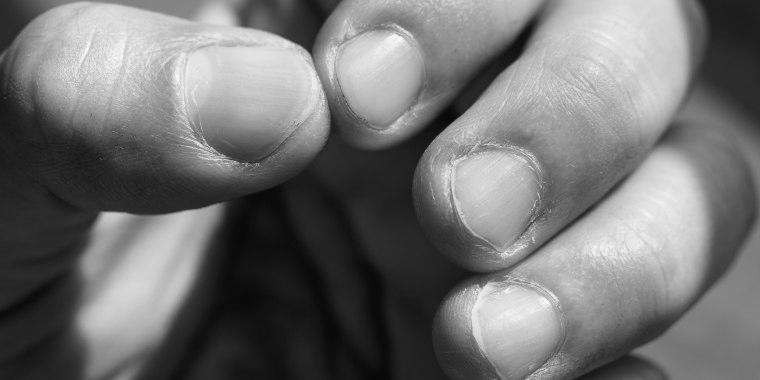
Natural hand cream is essential for healthy hands. Hands are the most exposed part of the body, and they tend to show the effects of frequent exposure to harsh climatic conditions. You may not use sunscreen on your hands often enough to protect them, but hand creams can help prevent skin damage and restore the health of your hands. Listed below are some products that contain the right ingredients for healthy hands. Read on to learn more.
Olive oil is another essential ingredient that helps care for your hands and nails. This substance is packed with antioxidants, which help to strengthen your nails and prevent dryness. Olive oil is also rich in Vitamin E and Shea butter, which work together to give your hands and nails a healthy glow. Using a hand cream with these ingredients regularly is essential for healthy hands and nails. But, how do you choose the right one?
It’s also essential to take care of your cuticles. Dry, crumbly nails are the result of damaged cuticles. Hand creams formulated specifically for your hands can help quench dry skin and strengthen weak nails. You can also use it in conjunction with a sun cream if you’d like. Hand cream with polysaccharides is an excellent choice for preventing skin damage and improving hand elasticity.
Avoiding harsh chemicals
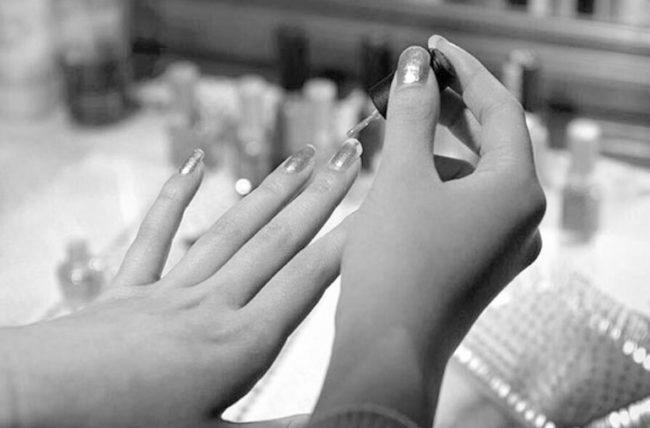
While nail polish can provide some protection against harsh chemicals, you can damage your nails by overusing nail polish remover. If you use nail polish remover, make sure you do so only once or twice a month. Try to avoid prolonged contact with water and other house cleaning chemicals. Wear cotton-lined rubber gloves when cleaning. Also, be aware of any warning signs of nail problems. If you notice your nails becoming discolored or separating from the surrounding skin or nail bed, you should visit your doctor immediately.
When choosing a nail product, look for products labeled “3-free.” This stands for “toluene, formaldehyde, and dibutyl phthalate” – chemicals that can adversely affect your health. Some nail products contain toluene, which interferes with your child’s development. You can also look for “acid-free” primers.
If you want to avoid harsh chemicals for healthy nails, learning more about their hazards is essential. These chemicals can be harmful both individually and when used in large amounts. The National Institute for Occupational Safety and Health (NIOSH) has conducted studies on these chemicals. The report details what chemicals can damage the skin or enter the body through intact skin. For nail salon workers, it is essential to follow the guidelines and avoid chemicals with these potentially harmful properties.
Avoiding harsh polishes
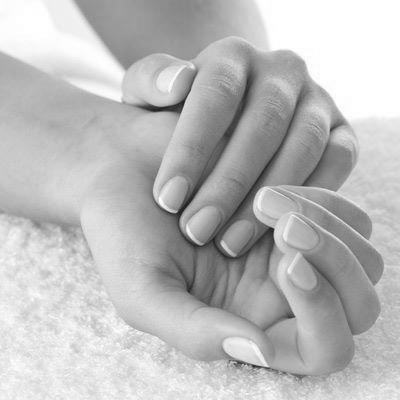
The toxic trio is one of the main ingredients in nail polish. This substance is harmful to everyone. While some brands make an effort to minimize the number of chemicals in their products, you should look for one that doesn’t contain these harmful ingredients. Listed below are five chemical additives that can be harmful to your health. They are parabens, formaldehyde resin, xylene, camphor, and toluene.
If you have healthy nails and want to wear polish regularly, it is crucial to avoid using artificial nails and overly aggressive manicures. Chemicals from household cleaners and antibacterial kitchen soap can cause your nails to dry out. Additionally, prolonged exposure to water can cause damage. Using polish on your fingernails can cause brittleness, making them more prone to infections and injuries.
To prevent the formation of cracks, avoid using orange emery boards. These tools are too rough on your nail bed. They cause small fissures, which can lead to breakage and tears. Instead, use a fine file. Try not to see back and forth on the board. Instead, file your nails evenly in one direction. This helps prevent contact with cleaning chemicals and minimizes breakage. You can also use acrylic nail polish to create long-lasting, beautiful nails.
Avoiding acetone
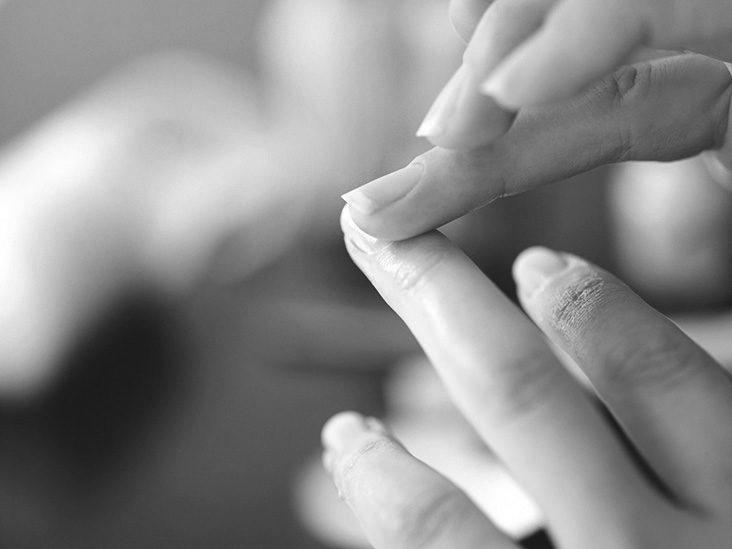
If you’re trying to keep your nails looking their best, you’ve probably heard of the dangers of acetone. This chemical is the main ingredient in many nail polish removers, but it’s also found in many household products. Although acetone is relatively safe for short exposure, overexposure to the chemical can lead to health problems. Fortunately, there are several natural ways to repair damage caused by acetone.
While acetone is a natural chemical in our bodies, exposure to high concentrations can cause respiratory and other health issues. Acetone fumes can also irritate the eyes and nose, causing dizziness, headaches, and nausea. It can also cause severe drying of the nail bed, disrupting cuticles, and causing dehydration of the skin around the nails. For these reasons, it is best to avoid acetone altogether.
If you decide to use acetone, wear gloves when handling the substance. Most nail salons use nitrile gloves for protection, but you should still wear latex or vinyl gloves when handling acetone. You should wash your hands before eating, and do not leave food or drink unprotected near the product. Wear long-sleeved shirts and pants or a skirt. Wearing long sleeves and pants can protect you from acrylic dust.
Avoiding dehydrating base coats
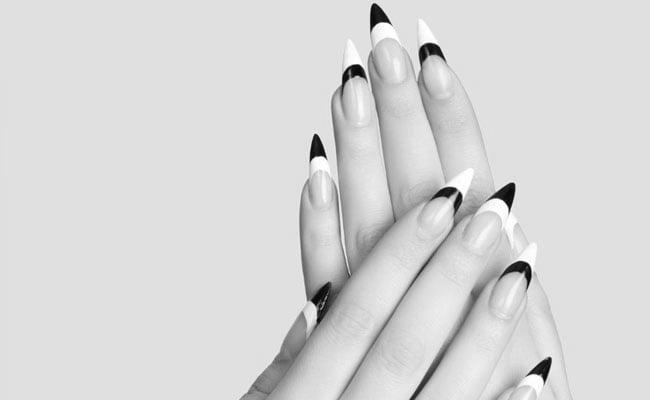
While you may be tempted to skip using a base coat, the fact is that you can do your nails a world of good just by putting on a good one. If you are unsure about the proper application of your base coat, read on for a few tips. First, avoid using bright colors if your nails are already stained. Second, if you want to wear a bright color, opt for a natural shade rather than neon.
If you use a base coat, you’ll prevent dry cuticles from forming. You’ll also be ensuring that your nails are protected and strengthened so you can apply nail polish on top. The best base coats contain nutrients, hydrate the pin, and repair and enhance the surface area. You can use them at home or at the salon to protect your nails. A base coat can also prevent dehydration and help your manicure look thick and long.
One of the best ways to avoid dehydrating base coats is to use a base coat with a non-toxic formula infused with horsetail grass and vitamin E. These are excellent for restoring dull, dry nails and preventing breakage. They work well as a standalone base coat and a base for nail varnish. However, be careful with non-toxic nail polish because it can chip easily.
Avoiding harsh topcoats
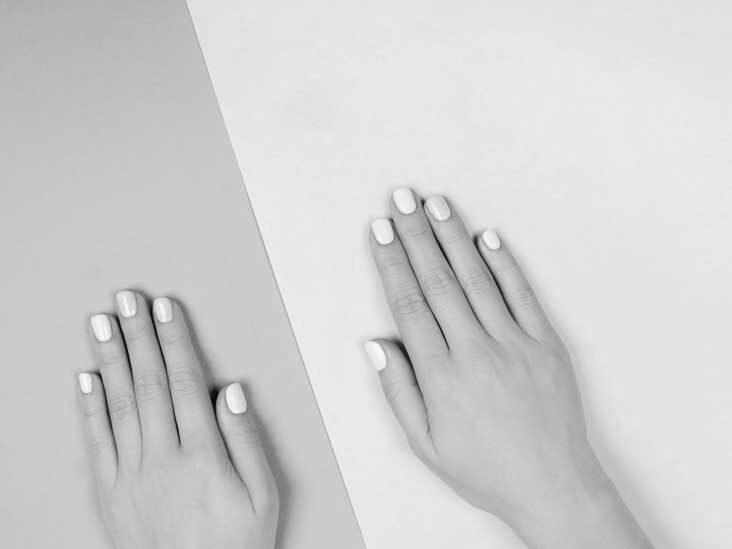
Topcoats are essential for protecting your manicure. They add shine to your nails and protect them from the elements and UV rays. The proper coat can save your at-home manicure, mainly when you paint your nails with your non-dominant hand. You can choose from various types of topcoats, from transparent to glittery. It will also protect your nails from the damaging effects of UV rays, keeping them looking new and beautiful for longer.
Another type of topcoat is matte. Matte top coats protect your nails without leaving them glossy. These products form a solid layer on your nails and make it harder for stains to adhere to them. They are great for kitchen use because you can eat or cook while wearing them without worrying about staining them.
Another top coat to avoid is those that have too much shine. Tend to make your nails look thinner and less healthy. Topcoats should also be made of natural ingredients. These types of coats are made without any harmful chemicals. They should also be non-scented and contain no parabens. They should also be easy to apply. You should use a top coat with natural ingredients for a smooth, shiny finish.
